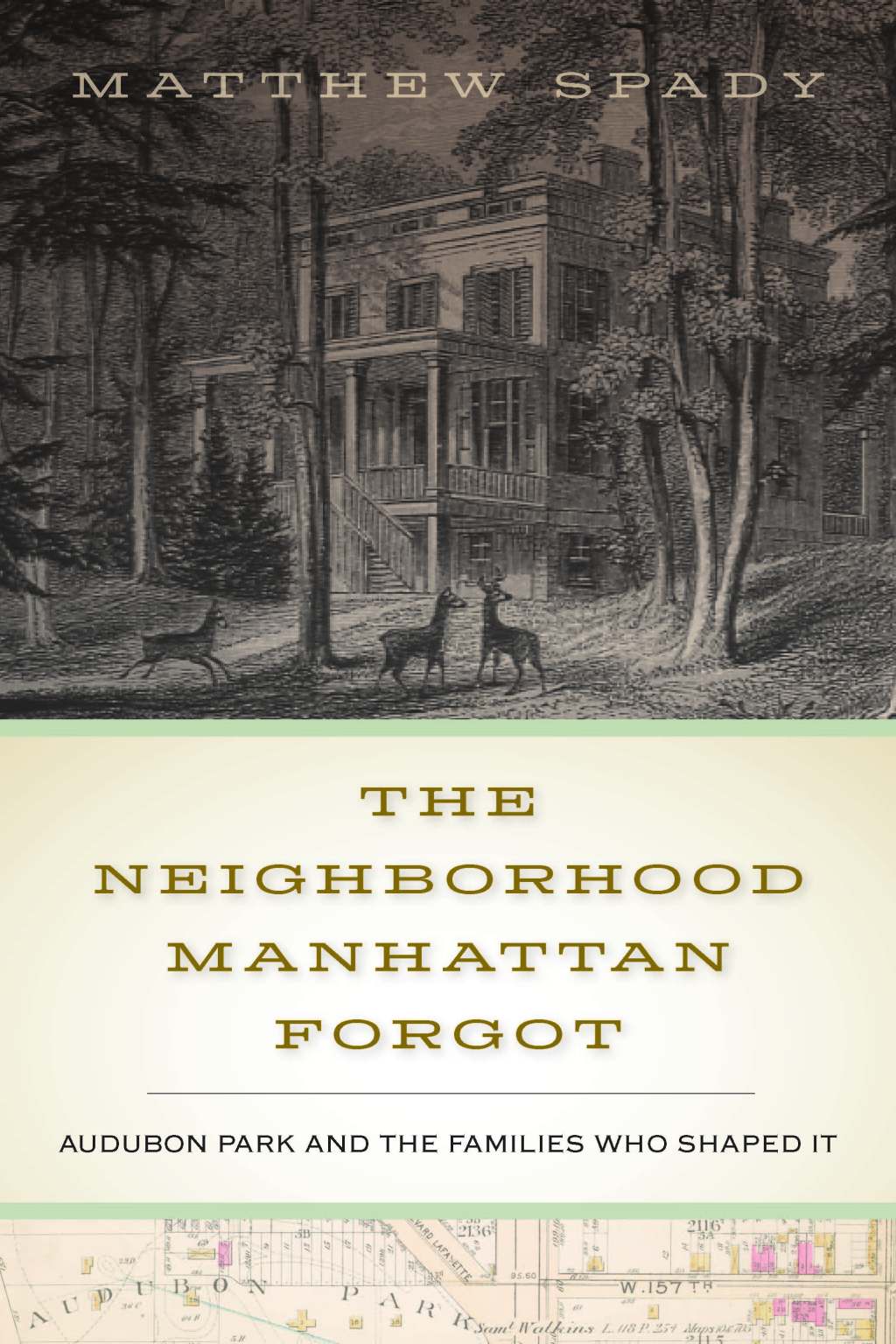Publishing in September, The Neighborhood Manhattan Forgot: Audubon Park and the Families Who Shaped It by Matthew Spady is now available for pre-ordering at Fordham University Press, Barnes & Noble, and Amazon.
Audubon Park’s Journey from Farmland to Cityscape
The Neighborhood Manhattan Forgot: Audubon Park and the Families Who Shaped It—the story of Audubon Park’s origins, maturation, and disappearance— is at root the study of a rural society evolving into an urban community, an examination of the relationship between people and the land they inhabit. Beginning with the Audubon family’s return to America from abroad in 1839, The Neighborhood Manhattan Forgot follows the many twists and turns of the area’s path from forest to city, ending in the twenty-first century with the Audubon name repurposed in today’s historic district, a multi-ethnic, multi-racial urban neighborhood far removed from the homogeneous, Eurocentric Audubon Park suburb.
With a colorful cast of characters drawn from the upper crust of nineteenth-century New York City, this fully illustrated history peels back the many layers of a rural society evolving into an urban community, enlivened by the people who propelled it forward: property owners, tenants, laborers, and servants. Thoroughly researched through primary and secondary sources, as well as private collections, The Neighborhood Manhattan Forgot tells the intricate tale of how individual choices in the face of family dysfunction, economic crises, technological developments, and the myriad daily occurrences that elicit personal reflection and change of course pushed Audubon Park forward to the cityscape that distinguishes the neighborhood today.

Pre-publication reviews
Told by its resident keeper of the flame and founding director of the Audubon Park Alliance, this well-documented saga of demographics chronicles a dazzling cast of characters and a plot fraught with idealism, speculation, and expansion, as well as religious, political, and real estate machinations.
— Roberta J.M. Olson, Ph.D., Curator of Drawings, New-York Historical Society Museum and Library, Professor Emerita of Art History, Wheaton College, Norton, MA; author of Audubon’s Aviary: The Original Watercolors for The Birds of America
It is a marvel. And though it’s as painstaking as an academic treatise, it’s a griping historical adventure story. In its pages one is propelled through time and space.
— Michael Henry Adams, an independent architectural, social and cultural scholar focused on Harlem, Newport and LGBT+ history; author of Harlem Lost and Found.
An illuminating treat! Matthew Spady introduces a remarkable old New York enclave that once flourished beyond Manhattanville in Upper Manhattan, personifying a suburban allure that shaped the breadth of the burgeoning city. A work rich in vivid historical detail and anecdotal observation as it retraces the neighborhood’s fascinating arc from remote woodland estate to the enduring Beaux Arts streetscape one still visits today.
— Eric K. Washington, author of Manhattanville: Old Heart of West Harlem and Boss of the Grips: The Life of James H. Williams and the Red Caps of Grand Central Terminal
Matthew Spady’s deeply researched and well-written history of the origins and growth of what came to be known as Audubon Park sets a very high bar for historians and scholars. One of Mr. Spady’s accomplishments as a writer is maintaining a neutral tone while developing his story that could easily lead one to quiet lamentation over the environmental costs of the decades of development.
— Daniel Patterson, Emeritus Professor of English, Central Michigan University; author of The Missouri Journals of John James Audubon
As a historian, Matthew Spady is a superb tour guide―and vice versa. His vivid chronicle of the evolution of Audubon Park is confident and enlightening, a primer on how to excavate and assemble a portrait of a neighborhood.
— John Taliaferro, author of Grinnell: America’s Environmental Pioneer and His Restless Drive to Save the West
Sample pages
About the Author
Matthew Spady is the creator of the virtual walking tour AudubonParkNY.com and curator for AudubonParkPerspectives.org, a news site that reflects on the constant intersection of past and present in a vibrant and historic neighborhood. He was a leader in the decade-long community effort that culminated in the Audubon Park Historic District.

























